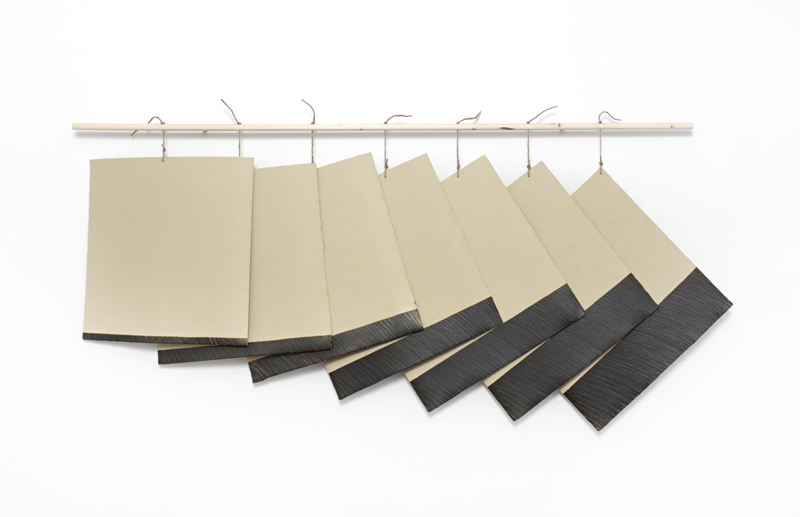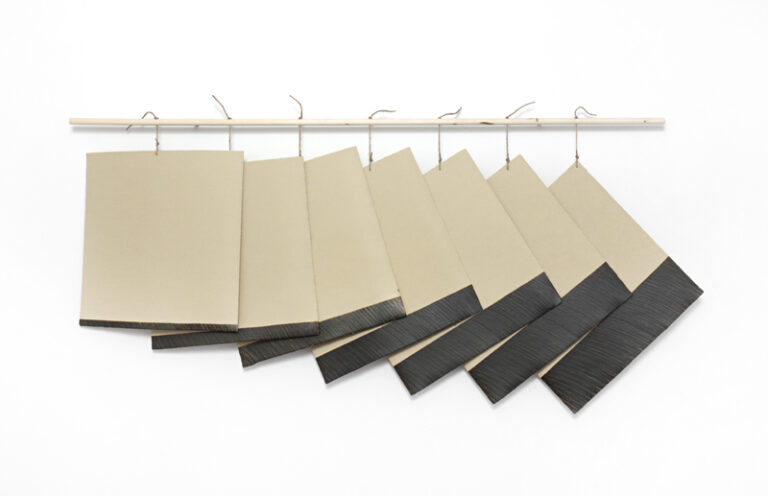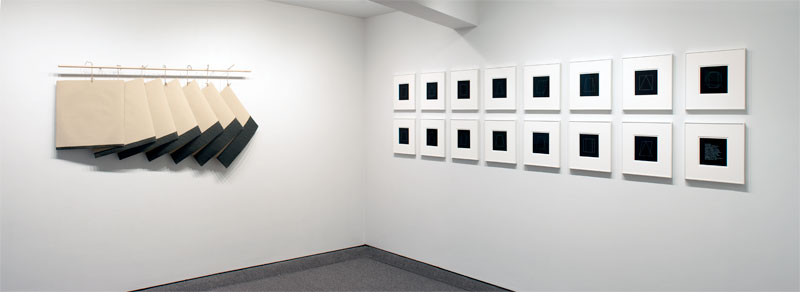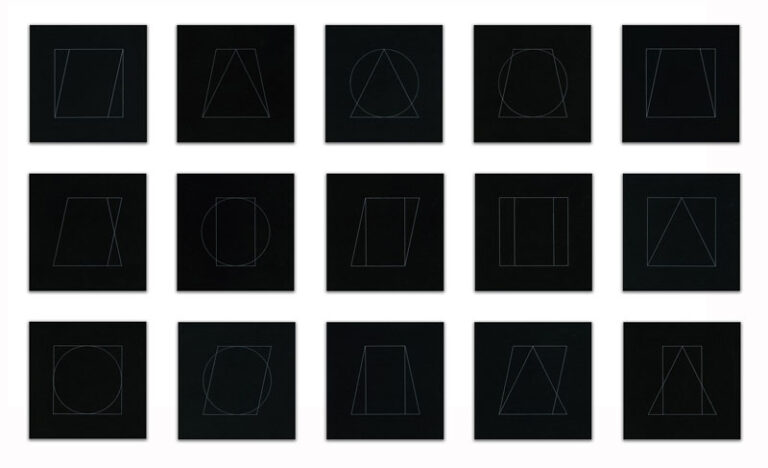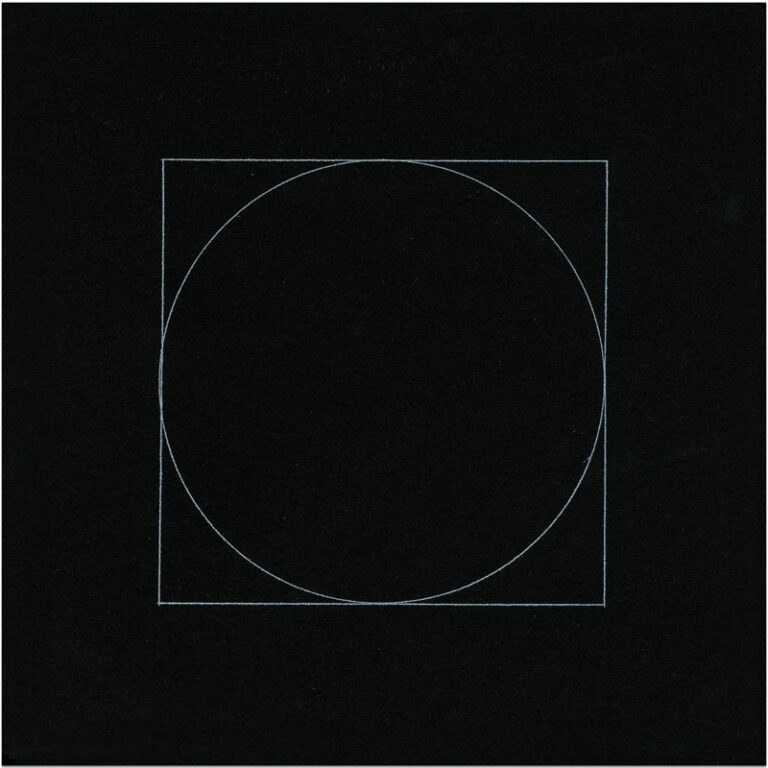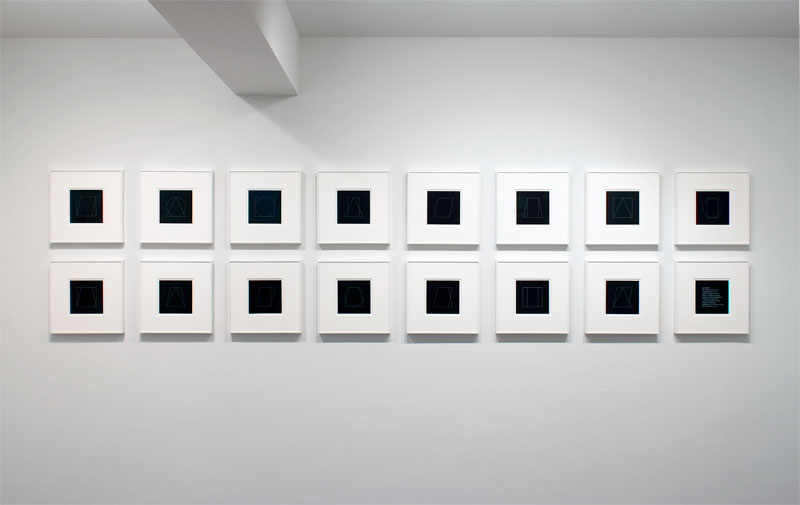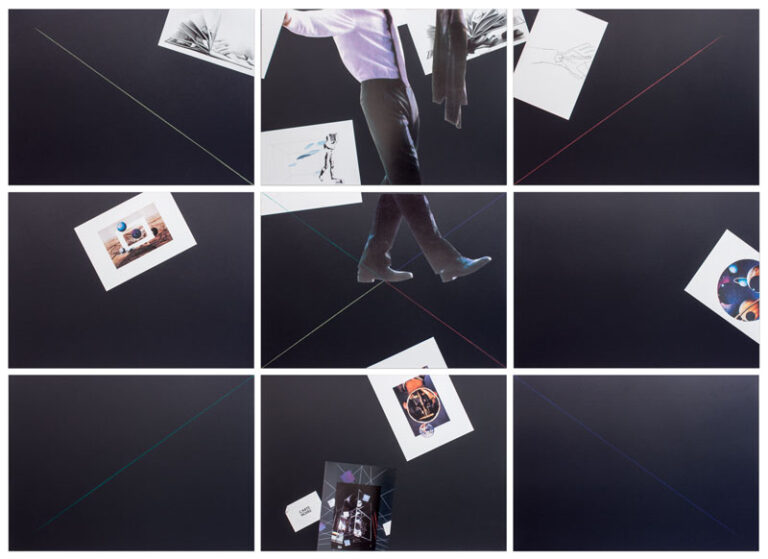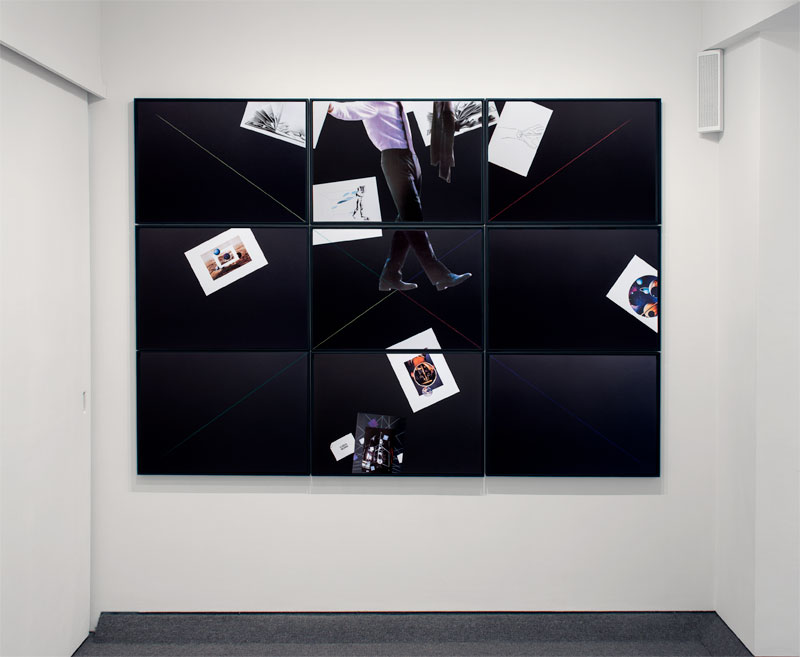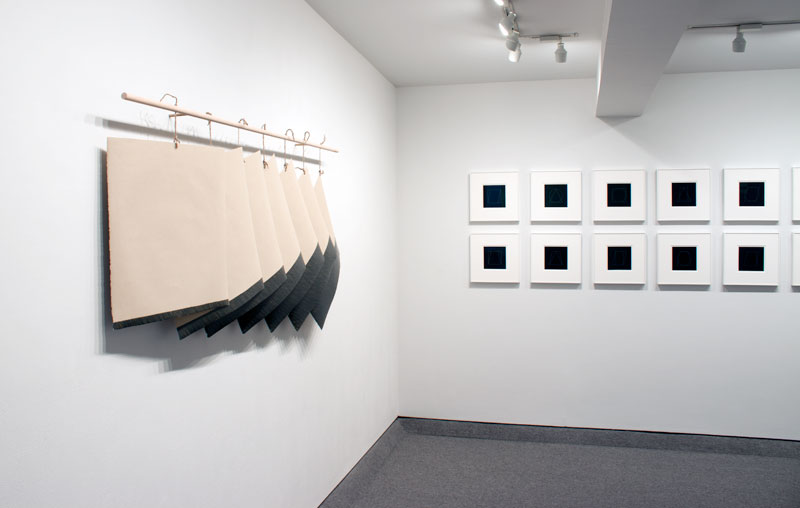Featuring works by
Sol LeWitt, Giulio Paolini, and Richard Smith
What happens when discrete objects overlap? The three artists in “Overlay” ask this same question and come up with quite varied answers.
In 1977, Sol LeWitt took six geometric forms (square, rectangle, triangle, circle, parallelogram, and isosceles trapezoid [aka flat-topped triangle]) and created all 15 possibilities of combinations of two of the shapes. Each juxtaposition provides both obvious and surprising results. Per usual for LeWitt, the overall work shows the qualities within and the equality between forms.
Richard Smith’s “Diary” from 1975 consists of seven sheets of the same size paper, each hung from a slightly different angle. Each piece that is progressively hung from a steeper angle has a larger area of printing on it, so as to balance between physical and illustrative progressions. Meanwhile, the one with the most printing is also the one that is most covered, yet it is the boldest and most “noticed” of all the elements, thus creating a balance between weight, volume and movement.
Giulio Paolini, an Italian artist most often associated with the 1960’s “movement”, “Arte Povera”, works with and through found objects, drawing, photography, sculpture and installation to explore ideas of absence, centrifugal and centripetal forces, continuation, repetition and variation, all within the framework of art-making as visual subject. His 1999-2000 piece, “Carte Noire”, utilizes the artistic technique of one point perspective (a method of representing three dimensions/depth/scale in two dimensions), along with sections of images he has created and utilized in various other prior works. Each of these images uses representation (perspective, dimension, movement and/or time). However, even with this ability to read the various two dimensional images as exploring deeper, things, as a whole, don’t quite make sense together as no one linear narrative is conveyed. This conundrum of comprehension is the basis of the piece – with the one-point perspective seemingly exploding out from the middle. With this in mind, the work takes pride in the regenerative nature of looking in and out, as well as back and forth.
